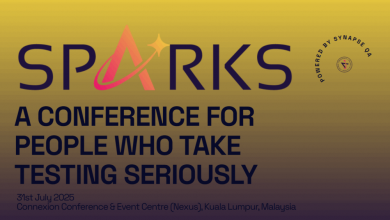Why Project Management and Onboarding Go Hand in Hand

Effective project management plays a crucial role in the onboarding process. When new hires join a company, they must quickly adapt to workflows, team dynamics, and project expectations. A structured onboarding process ensures they integrate seamlessly, reducing ramp-up time and increasing productivity. Project management tools help businesses coordinate onboarding tasks, set milestones, and track progress, ensuring every step is well-executed. By integrating onboarding with project management, companies create a structured approach that aligns new employees with organizational goals while minimizing disruptions to existing teams.
Jira alternatives provide a flexible way to manage onboarding and project workflows without the complexity often associated with Jira. While Jira is a powerful project management tool, some companies prefer alternatives that offer simpler interfaces, better integration with HR platforms, or more cost-effective pricing. Tools such as Trello, Asana, ClickUp, Monday.com, and Notion provide streamlined task management and collaboration features that work well for onboarding processes. These alternatives allow HR teams and managers to assign tasks, track progress, and ensure that new hires complete necessary steps efficiently. Additionally, these platforms foster cross-functional collaboration, making it easier for IT, HR, and department leads to coordinate training sessions, software access, and compliance requirements.
Employee onboarding software further enhances the new hire experience by automating tasks, reducing manual workload, and ensuring consistency. Tools like BambooHR, Workday, and Sapling provide dedicated onboarding features such as document management, e-signatures, compliance tracking, and training progress monitoring. When paired with project management software, these tools help businesses build a comprehensive onboarding ecosystem. By automating paperwork, scheduling training sessions, and tracking employee milestones, companies can create a structured yet adaptable onboarding framework. This approach ensures that every new hire receives the right support while allowing HR and management teams to focus on strategic initiatives rather than administrative tasks.
One of the biggest challenges in onboarding is ensuring seamless collaboration between different departments. IT teams must set up user accounts and permissions, HR teams need to manage paperwork and benefits enrollment, and department managers must schedule training and mentorship sessions. Without a structured approach, onboarding can become fragmented, leading to confusion, delays, and an inconsistent employee experience. Using a combination of project management and onboarding tools helps streamline coordination, ensuring that all necessary steps are completed in a timely manner.
Additionally, integrating project management tools with onboarding software creates a data-driven approach to tracking onboarding effectiveness. Managers can monitor completion rates, identify bottlenecks, and collect feedback from new hires to improve future onboarding experiences. For example, tracking how long it takes for a new employee to complete onboarding tasks can help HR refine the process to improve efficiency. By leveraging analytics and reporting features, businesses can make informed decisions that enhance both project management and employee integration.
Another key benefit of aligning project management and onboarding tools is the ability to create standardized onboarding templates. Many project management and onboarding platforms allow businesses to build repeatable workflows, ensuring a consistent experience for every new hire. Predefined task lists, automated reminders, and role-specific onboarding paths help employees get up to speed quickly and efficiently. This standardization minimizes errors, reduces confusion, and improves overall job satisfaction for new employees.
In an increasingly remote and hybrid work environment, digital onboarding has become essential. Cloud-based project management and onboarding software enable companies to onboard employees from anywhere, ensuring a seamless experience regardless of location. Virtual task assignments, digital training modules, and real-time collaboration features help remote employees integrate effectively. This approach also ensures that remote workers receive the same level of attention and support as in-office employees, fostering engagement and long-term success.
By pairing Jira alternatives with onboarding tools, companies can create a more efficient, organized, and engaging onboarding experience. This integration not only simplifies the new hire process but also enhances cross-functional coordination, ultimately leading to higher employee retention and improved team productivity. Businesses that invest in the right project management and onboarding tools will be better equipped to adapt to evolving workforce needs, ensuring long-term success in an increasingly competitive job market.




